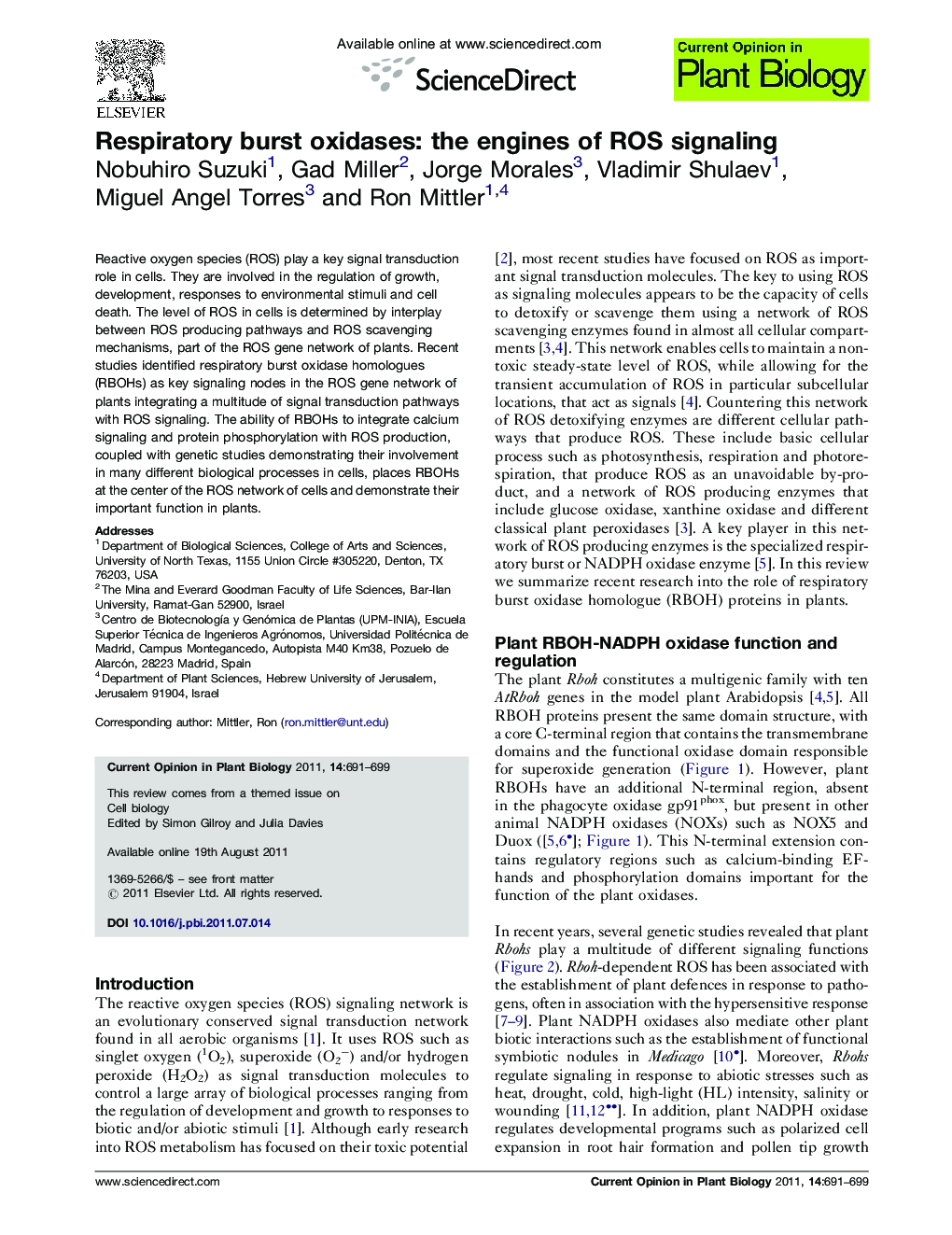| Article ID | Journal | Published Year | Pages | File Type |
|---|---|---|---|---|
| 2046206 | Current Opinion in Plant Biology | 2011 | 9 Pages |
Reactive oxygen species (ROS) play a key signal transduction role in cells. They are involved in the regulation of growth, development, responses to environmental stimuli and cell death. The level of ROS in cells is determined by interplay between ROS producing pathways and ROS scavenging mechanisms, part of the ROS gene network of plants. Recent studies identified respiratory burst oxidase homologues (RBOHs) as key signaling nodes in the ROS gene network of plants integrating a multitude of signal transduction pathways with ROS signaling. The ability of RBOHs to integrate calcium signaling and protein phosphorylation with ROS production, coupled with genetic studies demonstrating their involvement in many different biological processes in cells, places RBOHs at the center of the ROS network of cells and demonstrate their important function in plants.
► Reactive oxygen species (ROS) play a key signal transduction role in cells. ► The level of ROS in cells is controlled by the ROS gene network. ► Respiratory burst oxidase homologues (RBOHs) are key signaling nodes in the ROS network. ► RBOHs regulate a large number of important biological processes in plants. ► RBOHs integrate a multitude of signal transduction pathways with ROS signaling.
